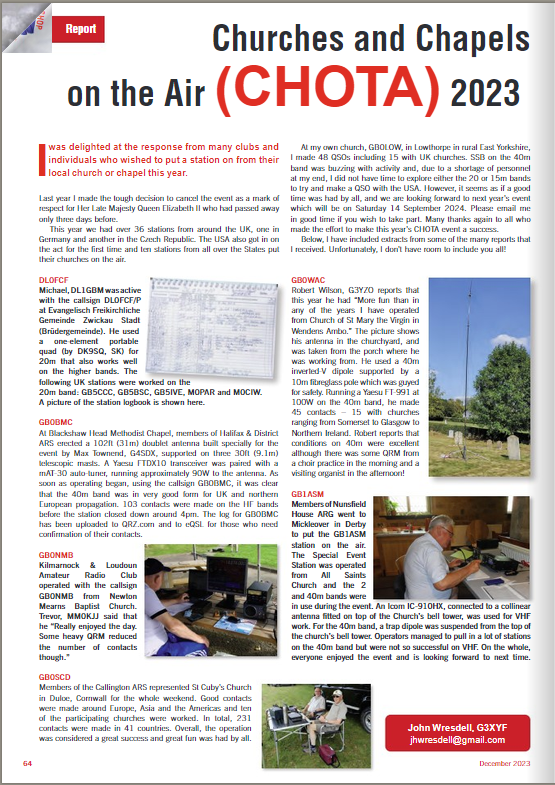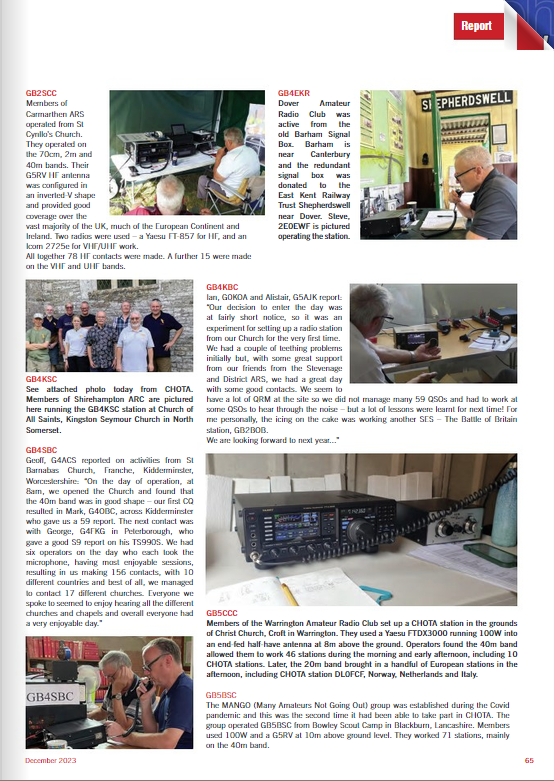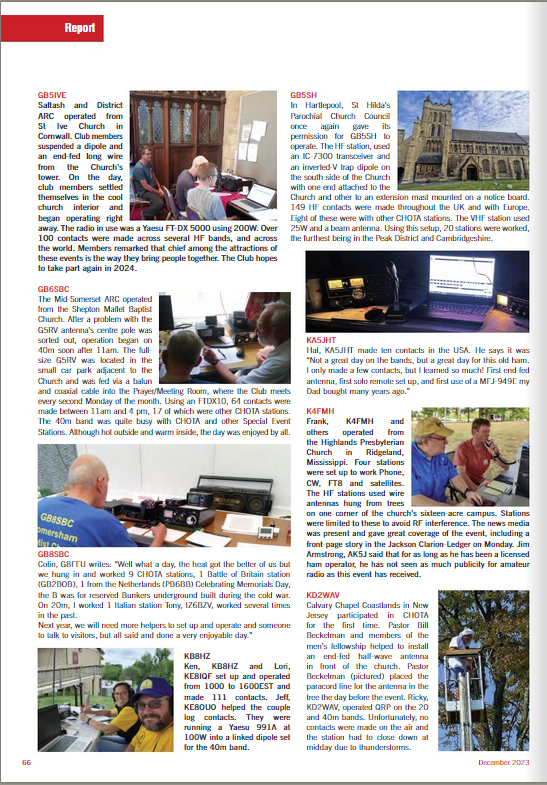2023 GB0SCD Churches on the Air St Cuby's Duloe
On the weekend of the 9th and 10th of September, St Cuby’s church in Duloe was represented in the annual Churches and Chapels on the Air (CHOTA) event organised by The World Association of Christian Radio Amateurs and Listeners (WACRAL). Originally founded in 1957 as the Huddersfield South Methodist Radio Club by the Revd. Arthur W Shepherd to link Radio Amateurs around the world who share the Christian faith, the organization became WACRAL in 1978. This year 48 churches took part worldwide, of which 36 were in the UK, 10 in the USA, 1 in Germany, and 1 in the Czech Republic.
This article is also available as a pdf.
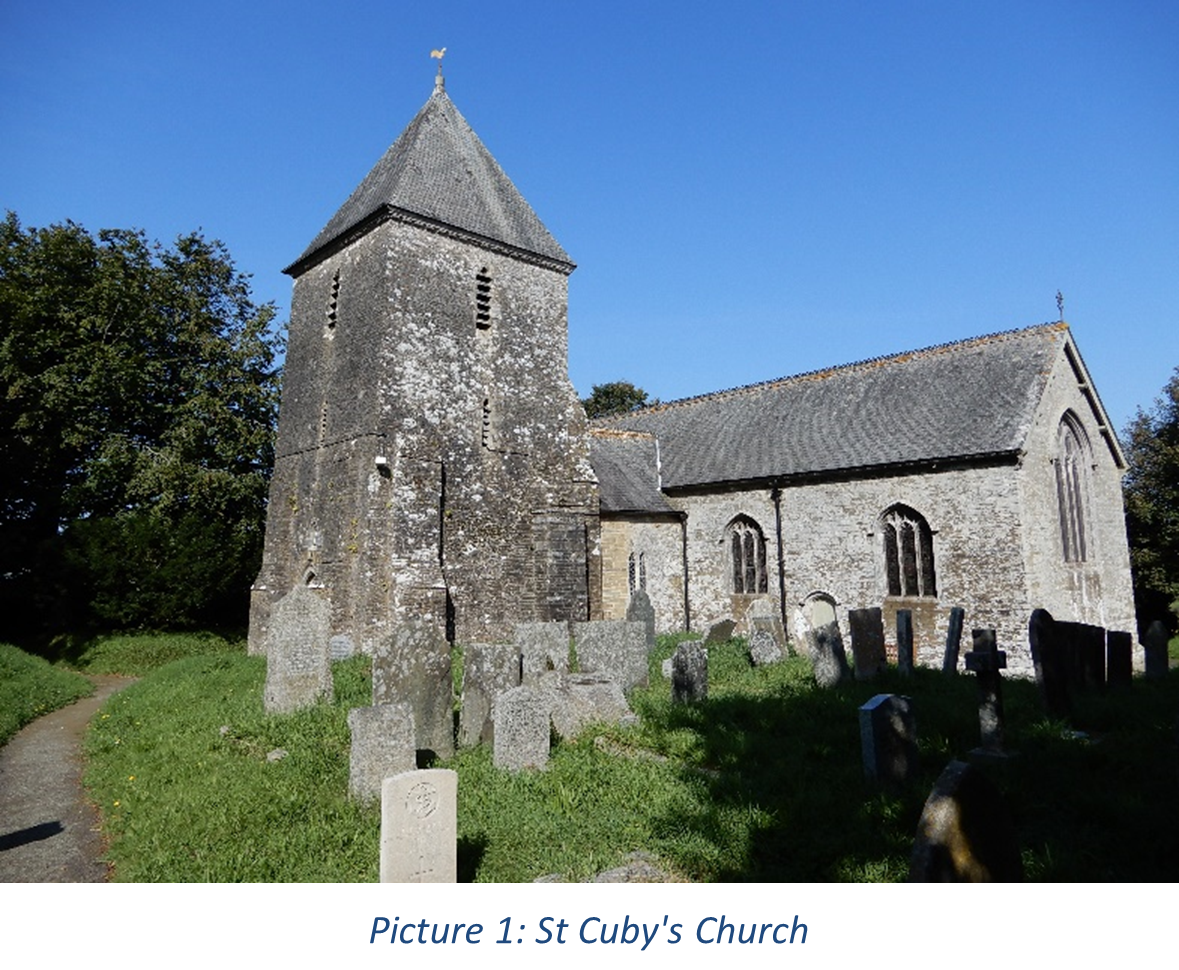
St Cuby’s church is a Grade 1 listed building and celebrated its 700th anniversary of dedication in 2021. It is medieval and stands on a circular mound, thought to be the site of an Iron Age fort, located at the southern edge of the village. The church dates from the 13th century but was extensively renovated in the mid-19th century.
Three radio stations were set up by club members resident in the village and surrounding area as far afield as Kelly Bray and Gunnislake. As our normal site used for field operations in the village was occupied by the annual Beer and Cider Festival, the site chosen was the playing field of the village school adjacent to the church, that being the nearest suitable site that offered a ‘radio quiet’ environment in a secure area. The site was far enough from the festival so there was no interference from the live music and no reciprocal interference from our radio transmissions. Although surrounded by a metal mesh fence and tall trees, there was no significant effect on radio propagation, and even the satellite station was unaffected. The radio stations operated on the 40m shortwave band, using SSB; on the 12 - 30m shortwave bands inclusive, using FT8; and on the microwave bands via the QO-100 amateur geostationary satellite, using SSB, FT4 and FT8 at different times. The three stations were only operational on the Saturday, leaving the 40m station operating alone on the Sunday. Weather conditions were good with good propagation on both days, although the threat of thunderstorms on the Sunday caused the HF SSB station to close down around 1700hrs. All stations, using the special call sign GB0SCD, produced good contacts in and around Europe, Asia and the Americas.
Details of the stations and operating modes are listed in the table below. For the non-technical, SSB (Single Sideband) is a cut down version of AM used in commercial broadcasting, and FT4 and FT8 are forms of digital data signal transmission enabling short messages to be decoded from very weak signals.

The team members comprised Alastair (M0KRR), Andy (M0ITM) and Shirley (M0WXG) from Duloe; Peter (G8BCG) from Coombe Farm, Herodsfoot; Chris (G1VNA) from Kelly Bray; and John (G4PBN) from Gunnislake.
Over the two days, a total of 231 contacts in 41 countries were made including 10 of the participating churches. The churches worked were; Blackshaw Head Methodist Chapel; St George’s Rye; All Saints Belton; St David’s Liverpool; All Saints Kingston Seymour; St Barnabas Kidderminster; All Saints Bedford; ViZion Church Glasgow; St Hilda’s Hartlepool; and the Baptist Church Shepton Mallet.


Under the circumstances, this was very good. The log files from all stations were combined into an ADIF file that was uploaded to eQSL, QRZ and LoTW so that our contacts could have their QSOs confirmed and QSL cards exchanged electronically.
We received only one visitor although the highlight of the weekend was a greeting passed by the grandaughter of one of our contacts. In return she received a round of applause and ‘hugs and kisses’ from the operators.
Overall, the operation was considered a great success and great fun was had by all.

The table below shows the countries worked and the number of QSOs made with the frequency bands and modes.
The HF bands worked were 12, 15, 17, 20, 30, and 40m and the satellite operated on the 13cm uplink and 3cm downlink. QSO maps for European and Non-European contacts are presented as Pictures 5 and 6 respectively.
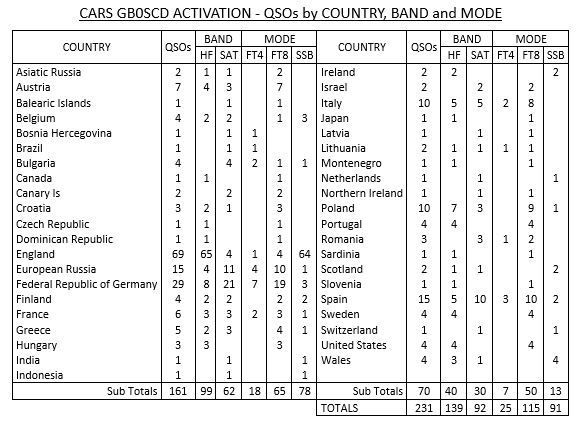
2023 Churches and Chapels on the Air RadCom Feature
